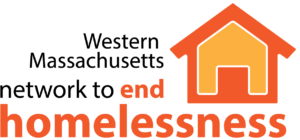Veterans Committee Meeting
July 10, 2015
In attendance: Beth Barbra, Veterans Inc., Ben Cluff, DPH, Steve Connor, Northampton Veterans Services, Anthony DiStefano, Western MA Hospital, Andy Fahey, VA Springfield, Scott Haskell, Turner House, Chris Lizotte, West Springfield Veterans Services, Mary Loughlin, Food Bank of W. MA, Luz Marcano, VA Central Western MA Healthcare System, Melissa Mateus, Springfield Partners, Jim Mahoney, Holyoke Veteran Services, Lizzy Ortiz, City of Springfield, Katherine Person, Veterans Inc, Jerry Ray, Mental Health Association, Pamela Schwartz, Network, Todd Simon, Bosco Properties, Dom Sondrini, Soldier On, Kerry Spitzer, MIT, Kate Sweetser Owens, VA HUD VASH, Sue White, VA HUD VASH, Sabrina Willard, Springfield Partners, Beth Ziemba, Food Bank of Western MA
Review of Western MA Opening Doors Plan strategies to end veteran homelessness
First, we reviewed the baseline data – 38 homeless in Hampden County; 220 homeless in Three County – and discussed the challenge of Grant Per Diem beds in Three County. We named the VA’s “renaming” homelessness to exclude veterans in GPD transitional housing in order to meet the goal of ending homelessness by 2015. We acknowledged the complexity and challenge of funding and housing reallocation in order to address the quantity and reliance on GPD beds in the veterans system.
Strategy: integrate veterans into a coordinated entry system. We discussed what this meant for veterans. We agreed that the crux of the challenge is ensuring that veterans who entered a non-veteran shelter (or were engaged on the street) are directed to the appropriate veteran resources.
Towards that end, the Hampden CoC met earlier this week and Kate Sweetster-Owens of Springfield HUD VASH agreed to draft a streamlined “flow chart” guiding non-veteran shelter staff on how to establish veteran status and first steps around eligibility and access to resources.
Kate provided that draft flow chart for review at the meeting. We agreed that the flow chart should include guidance to SSVF and Chapter 115 benefits as well (and it will include the more complete referral sheet already produced by the committee on the reverse side). Mary Loughlin of the Western MA Food Bank said it would be very helpful to have the flow chart contain all possible referrals (not just to HUD VASH) – they intersect with veterans in their food pantry work and want to better integrate veteran referrals in their points of contact.
Note: Please see the newly revised flow chart here
We affirmed the Hampden CoC’s plan to do “train the trainer” sessions at Friends of the Homeless – the primary point of entry for veterans – since integrating this inquiry and guidance at the front door is critical to getting veterans to the resources.
We agreed that the remainder of “coordinated entry” for veterans is really about ensuring that veterans who do not qualify for vet services of any kind are redirected to mainstream resources as efficiently and thoroughly as possible.
We discussed the VI-SPDAT – the vulnerability assessment and prioritization tool adopted by Hampden and under discussion in Three County. Sue White shared that Sue Moorman – who conducts the assessments for HUD VASH – has found the tool extremely limited (and relies on the VA tool for better info and ranking of need). Sue White agreed that at our next meeting Sue would share her experience and data on her use of the tool.
In terms of accessing and maximizing benefits outside the VA resources (e.g, SNAP, TAFDC), Mary Loughlin of the Food Bank suggested we look into BECS – a state online system that provides initial eligibility info for other resources based on the data entered on a person. Pamela will learn more from Mary and share it with the group.
Strategy: create a by-name list of all homeless veterans and assign each one to a Housing Navigator
We discussed the issue of releases of information and the need for 3 to be signed at the point the veteran enters any system: general release (being devised by Hampden CoC that lists a number of area groups), Veterans Services, VA. We agreed that this should not be that difficult if we manage the outreach and training on this step in the process.
There were questions about the establishment of a “housing navigator:” where is this person coming from? Which agency? How is the person determined? Where is the resource to provide for this person? There was shared enthusiasm for the idea and shared confusion about how to execute it. Pamela said she will follow-up with Gerry to get more clear on where we at in this process and the ideas that are currently on the table for implementation.
Andy Fahey of Springfield VA noted that it was agreed that he would do a monthly “veteran rap session” at Friends of the Homeless as a means of outreach. Andy will respond “as needed” to calls from Janice or other FOH staff regarding specific Veteran needs.
Reviewed Brainstorm on Primary Drivers of Veteran Homelessness from 5/8/15 meeting
Good and affirming news is that the “drivers” brainstormed on 5/8 are essentially in our Plan produced on 6/30….just the way it should be if the Plan is to serve as our vehicle for action.
Other comments:
Steve Connor noted that we need to build communication/marketing into our efforts since due to the high number of GPD beds in the region it never appear to the general public that our numbers of homeless veterans are going down.
Steve also noted that we need to account in the Plan for outreach in the jails (it is happening both by Soldier On and Veterans Inc in county corrections but the state system is untouched). Pamela will note this addition in the strategies section – can include it in the strategy: increase outreach to unsheltered veterans and veterans in individual and family shelters, etc.
Next meeting:
Friday, September 25, 9:15-10:30 am, Mental Health Association – we will meet sub-regionally between now and then and will continue our work via email as well.

